I discovered permaculture about the same time I began contemplating financial independence and lifestyle design while reading Tim Ferriss’s first book The Four Hour Work Week. Once somebody elects to jump down the wonderful rabbit hole that is permaculture they usually find that the principles and philosophy behind it inherently lead them toward a less mainstream, more sustainability-focused lifestyle. With permaculture’s focus on growing food and more wisely stewarding resources, permaculture practitioners often start spending less money and more mindfully stewarding their financial (and other) resources in order to live a more fulfilling life on their own terms.
Admittedly, there is a far greater emphasis in permaculture on sustainability than in the financial independence community, but there is still some overlap in thinking between the two camps. I’ve observed some key commonalities between permaculture and FI/RE (Financial Independence/Retire Early). In particular, both encourage optimizing to eliminate waste, value production over consumption, and promote resilience and long term planning.
What is Permaculture?
In this first of three posts on permaculture and finances I’ve compiled some of the highlights I’ve found from across the internet in which others have already shone some light on this overlap between the two worlds. Before proceeding any further though, let’s include a description of permaculture for those who are just learning about it here for the first time. According to Australian permaculture educator Robyn Francis,
“Permaculture is a synthesis of ecology and geography, observation and design.”
“Permaculture encompasses all aspects of human environments and culture, urban and rural, and their local and global impact.”
“It involves ethics of earth care because the sustainable use of land and resources cannot be separated from lifestyle and philosophical issues.”
While permaculture is most widely known for and applied in how we steward land and nature, the permaculture flower contains seven petals. These are: 1) land and nature stewardship 2) built environment 3) tools and technology 4) culture and education 5) health and spiritual wellbeing 6) finances and economics 7) land tenure and community.

Similarly, to the extent that permaculture is referenced in the financial independence community it is largely mentioned in conjunction with gardening and homesteading. Numerous such search results pop up when entering the term permaculture in the Mr. Money Mustache forum search engine as well as the online Reddit financial independence community.
FI/RE Bloggers on Permaculture
Probably the first well-known FI blogger to blog about these congruences was Jakob at Early Retirement Extreme (ERE). In his What permaculture and ERE have in common post he noted that both ERE and permaculture apply whole systems thinking, which is in stark contrast to the short-term thinking many people use to meet their immediate needs without taking the time to ponder the bigger picture. He also provided concrete examples of how guilds and principles that guide permaculture correlate with aspects of FI/RE thinking and noted one of the key common themes for FI/RE and permaculture – obtain a yield. Jakub was also interviewed in an early episode of the popular permaculture podcast Rich Soil.
Two FI bloggers have attempted to link the twelve guiding principles of permaculture with personal finance concepts. Trent Hamm of the Simple Dollar wrote one of these articles – Financial Independence and Permaculture. The second article Permaculture, Resilience, and Financial Independence appears on a blog written by a European, who seems to no longer be actively posting on his site. Some of the permaculture principles such as obtain a yield and collect and store energy seem quite obvious and others benefit from further thought and explanation, which both bloggers offer in their posts.
Permaculture Bloggers on Financial Freedom/FI
That finances and economics petal of the permaculture flower, which we mentioned above, is not only often overlooked by people with only a passing familiarity with permaculture. Even those of us well trained in permaculture practices often don’t think much beyond the land and nature stewardship petal.
When permaculturalists do talk about money and livelihoods it tends to be couched in the context of financial freedom (vs. independence). Permaculturalists want to be able to grow their own food and generally meet as many of their needs as possible in ways that are regenerative to the planet and the people inhabiting it. Thus they are interested in financial freedom as a way to spend their time growing their own food, regenerating people and planet, participating as little as possible in our current extractive and degenerative economy, and NOT sitting in an office at a computer for most of their waking hours. There are a number of threads related to financial freedom on the Permies forum.
Michael Hoag of Lillie House has done some very impressive thinking around financial independence from a permaculture perspective. His teachings are heavily influenced by beloved FI icon Vicki Robin, co-author of Your Money or Your Life. In his Permaculture and Money: Investing in Transforming our Lives, Livelihoods, and Society post he provides very helpful charts, diagrams, and videos to guide people through assessing their current situation and transforming their “permaculture home economy” into something much more regenerative.
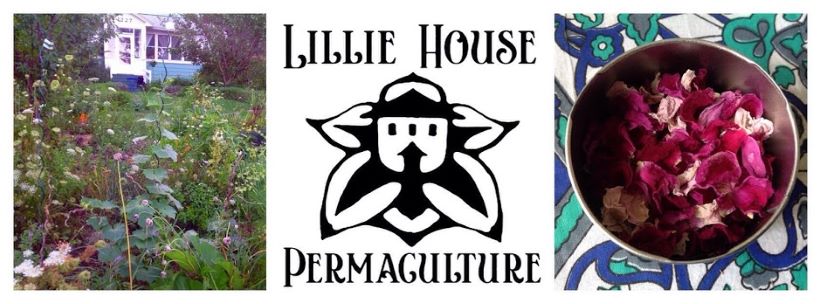
A few months after drafting that initial post Michael Hoag published a two part series in which he shared additional ideas related to this theme. The FIRE Path to Financial Freedom (and The Most Important thing We’ve Learned about Permaculture) relays Michael’s observation about the necessity of identifying “the key leverage points where we can get the most positive personal and societal transformation for the least effort.” The FIRE Path to Freedom – Part 2 FIRE or FREE? further clarifies the distinction permaculturalists see between financial independence and having more freedom in their lives on their terms. Michael coins a fantastic new term for this FREE: Financially Resilient and Economically/Ethically Empowered.
Permaculture FI: Is it the Same as Prepper FI?
I had already been planning to write this post, when That Frugal Pharmacist’s Prepper FI guest blog post was published on Tread Lightly, Retire Early late last year. Preppers are those who actively prepare for all types of emergencies from natural disasters to civil unrest. In her well-written, well-received, and very thorough post That Frugal Pharmacist outlines all of the steps her family is taking to increase their self-sufficiency and resiliency. They have applied these considerations to decisions they’ve made about where to purchase their forever home, food sourcing and storage, and of course their finances. Then last month Frugasaurus, who compiled that very cool list of sustainability-focused FI bloggers (and was kind enough to include this little blog of mine), wrote her own post conveying how much she connected with That Frugal Pharmacist’s Prepper FI ideas in light of her anxious tendencies and fear of a looming future disaster.
Each of these articles further underscored for me the overlap and differences between permaculture and prepping. Certainly both put tremendous emphasis on preparedness and resilience, particularly regarding food growing and preserving. I think broadly speaking the big difference is mindset. To my mind permaculture is steeped in optimism and abundance, a belief that all of the solutions for meeting human needs while maintaining a healthy ecosystem are out there if we look to nature and its closed loop system as the model. From what I’ve seen, Preppers seem to be motivated by fear and anxiety and think more in terms of scarcity. The comments in this Reddit thread express similar thoughts. With the high priority preppers put on self-sufficiency, they generally seem less focused on the permaculture principle of “earth care” beyond their own properties or communities. One specific example is that preppers often support the extractive mining industry by investing in physical bars of gold or silver instead of prioritizing regenerative or sustainable investments.
These of course are generalizations. No strict definitions of either permaculture or prepping exist. Each person practicing them interprets and implements them differently, which leads to a lot of gray area, blurred lines, and further overlap. One person who walks with a foot in both worlds is Jack Spirko host of The Survival Podcast. Practicing both permaculture and
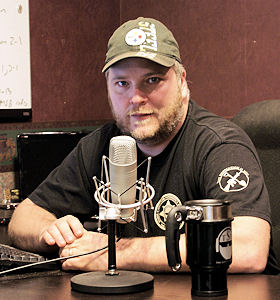
prepping he achieved financial freedom long ago and encourages others to do so as well via his popular podcast. In episode 765 (he’s now at over 2,000 episodes) Jack even interviewed Jakub from Early Retirement Extreme.
There are many areas where I don’t see eye to eye with Mr. Spirko, yet I highly value the information he has compiled and shared about running successful permaculture businesses and pursuing financial freedom. Two YouTube videos (this one and this one) of him speaking on running permaculture businesses are especially insightful. A number of FI/RE enthusiasts may have already been exposed to some of his musings on financial freedom by listening to Joshua Sheat’s Radical Personal Finance podcast episode 299 -The Philosophy of Modern Survivalism and Permaculture as Applied to Financial Planning.
More hybrid permaculture/prepper thinking on the subject is shared by John Pugliano at a Survival Podcast workshop. This session was recorded and turned into 3 podcast episodes for John’s Wealthsteading podcast. In the first episode John provides a very insightful general overview of how he believes permaculture principles and prepper philosophy can be harnessed and applied to the pursuit of wealth. The second episode contains John’s thoughts around investing in stocks. His prepper influenced opinion in this realm diverges quite a bit from mainstream FI/RE thinking. It also differs from traditional permaculture ethos as investing in extractive, degenerative, global equities is in stark contrast to the investing in small, local businesses encouraged in financial permaculture. In the third episode we are exposed to an innovative application of permaculture principles in relation to starting a small business.
Winding Down Part 1 of this Permaculture FI series
So in this first in a series of three posts on permaculture and financial independence I wanted to relay the highlghts of what I have encountered so far online linking the two. I would like to reiterate that there is no one correct way to implement permaculture itself, let alone in relation to finances. Lots of varied thinking and grey areas exist especially for people like myself who acquired some money, investments, and other assets before being introduced to permaculture.
In the second part I go into more detail on the finances and economics petal of the permaculture flower. Then in the third and final part we look at some real-life applications of financial permaculture and how it feeds into financial independence.
EDIT: After I posted this a reader steeped in permaculture but not FI/RE suggested I further explain this concept to other permaculturalists who are finding this article, but may not be familiar with FI/RE. According to Investopedia,
“Financial Independence, Retire Early (FIRE) is a movement dedicated to a program of extreme savings and investment that allows proponents to retire far earlier than traditional budgets and retirement plans would allow. By dedicating up to 70% of income to savings, followers of the FIRE movement may eventually be able to quit their jobs and live solely off small withdrawals from their portfolios.”

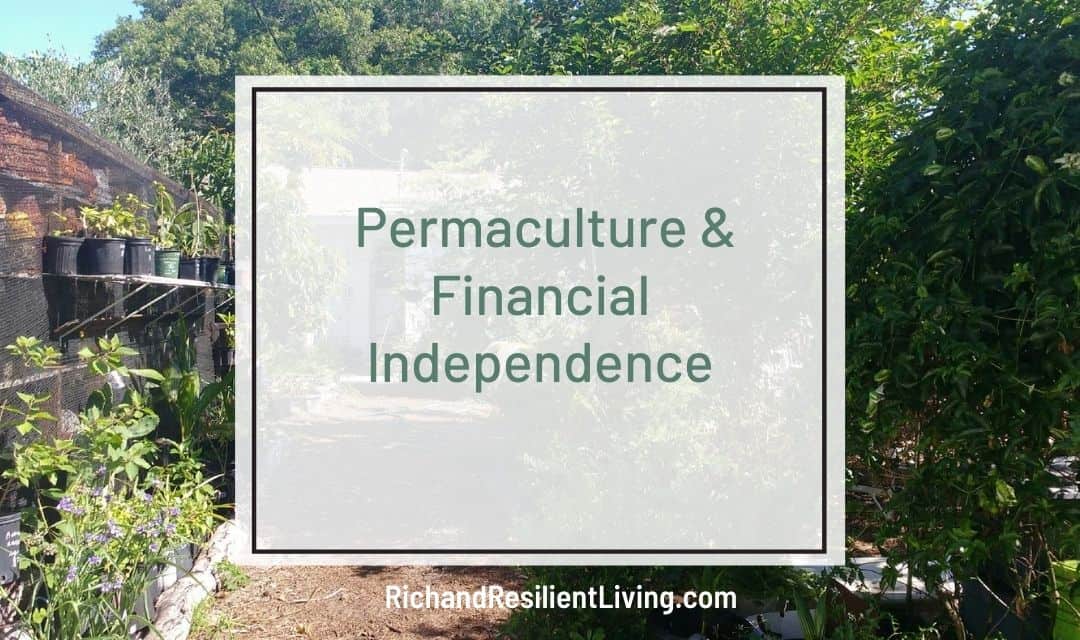
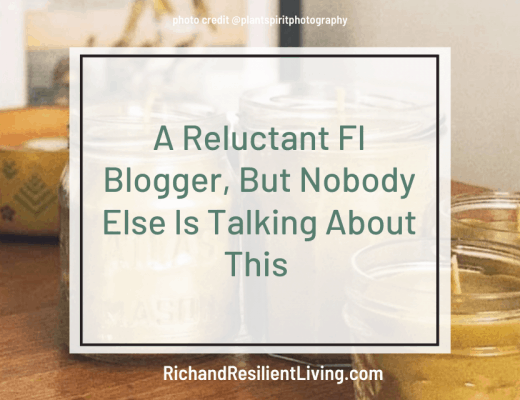

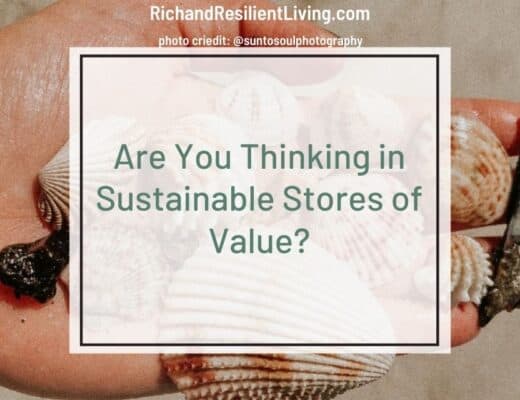
10 Comments
Mike Hoag
April 29, 2019 at 10:15 amFantastic bibliography of Permaculture FI! Thanks!
3pfi
April 29, 2019 at 11:49 amThanks, Mike. I’m glad we are finally connected online. Look forward to more interaction in the future.
Lynn Frair
April 29, 2019 at 11:31 amI love your articles! I just read “The Resilient Investor” and love the RIM map.
See you next month!
Lynn Frair
3pfi
April 29, 2019 at 11:56 amThanks, Lynn. I enjoyed listening to your story on Choose FI’s most recent Friday Roundup podcast episode (https://www.choosefi.com/your-blueprint-to-financial-independence/_). My mother is a retired Hospice administrator and just co-authored a book outlining the interesting history of what at one point was the largest (in terms of patient numbers) non-profit Hospice at which she worked for many years. I’m going to try and remember to ask her for a copy of it to bring to you when we meet later next month.
Angela @ Tread Lightly Retire Early
May 2, 2019 at 10:44 pmI’m definitely more permaculture leaning than prepper leaning but I have bob tendencies in abundance. Preparedness for me is most likely in terms of the big earthquake we may get up here at some point. Basically, permaculture is the fun hopeful stuff and preparedness is the scared, worried stuff. They go hand in hand, at least in my world.
3pfi
May 7, 2019 at 12:21 pmYes, Angela. That’s a good way to put it. I have some of those bob tendencies as well toward (hurricane) preparedness living here in coastal Florida.
Financial Permaculture: Making Financial Independence (FI) More Meaningful & Resilient - Triple Bottom Line FI
July 22, 2019 at 10:35 am[…] plots of land. This is a wonderful and important thing, which I do as well. As I mentioned in the first post in this series linking permaculture and financial independence however, permaculture in its broader implementation […]
Permaculture FI: Optimizing for Multi-Capital Abundance – Part 3 - Triple Bottom Line FI
August 26, 2019 at 10:33 am[…] interest to you. Jump start your learning and thinking by reviewing the resources I shared in the first post in this Permacutlure FI series. Millennials with student loan or consumer debt would be wise to target those and get them paid off […]
A Roundup of Sustainable Living & Financial Independence - Rich and Resilient Living
June 19, 2020 at 3:57 pm[…] 13) This last person does not blog about financial independence regularly, but he produced some of my favorite content linking money and permaculture. Start with this piece by Mike Hoag of Lillie House and then move onto this article by him as well. You can read more about my thoughts on his musings in this first post of my Permaculture FI series. […]
Blogiversary Update and Reader Survey - Rich and Resilient Living
June 24, 2020 at 10:40 am[…] to share and inspire others with. If you missed those three Permaculture FI posts you can find them here, here, and […]